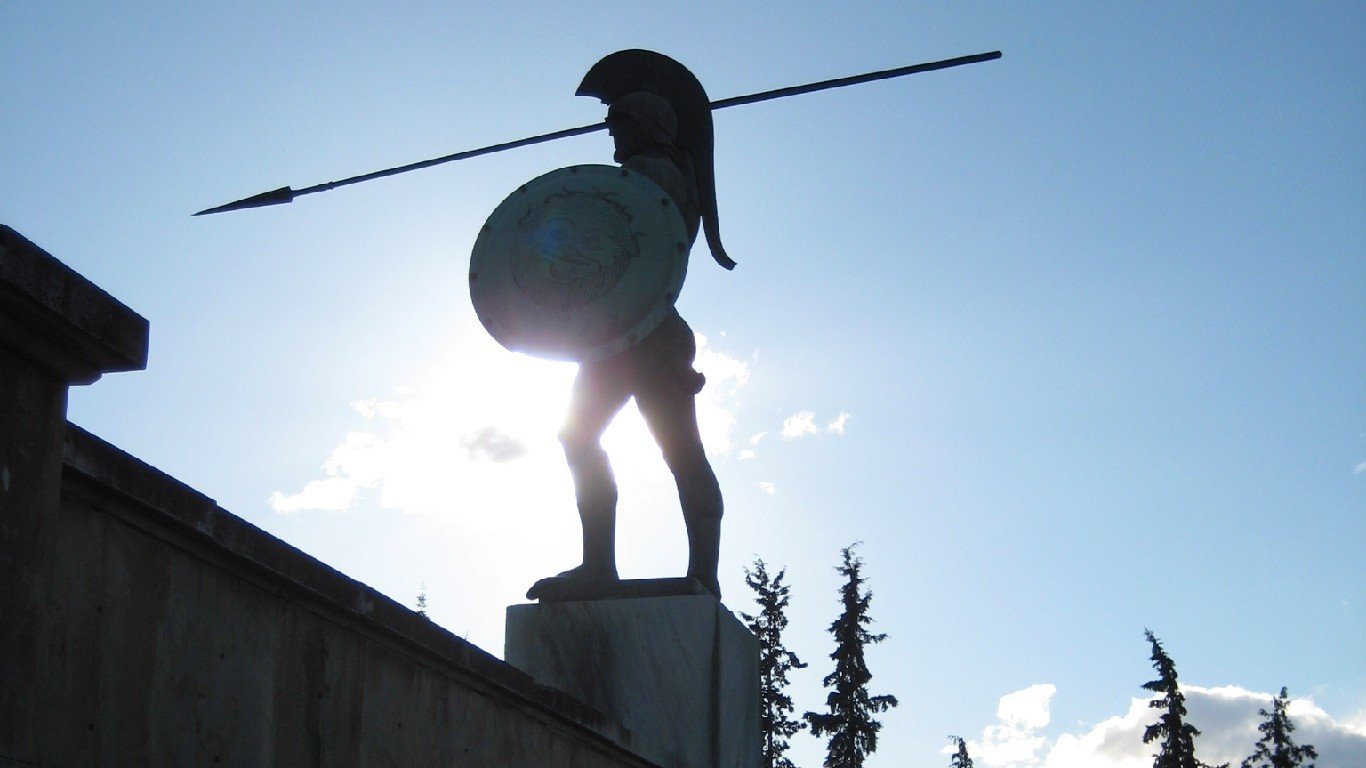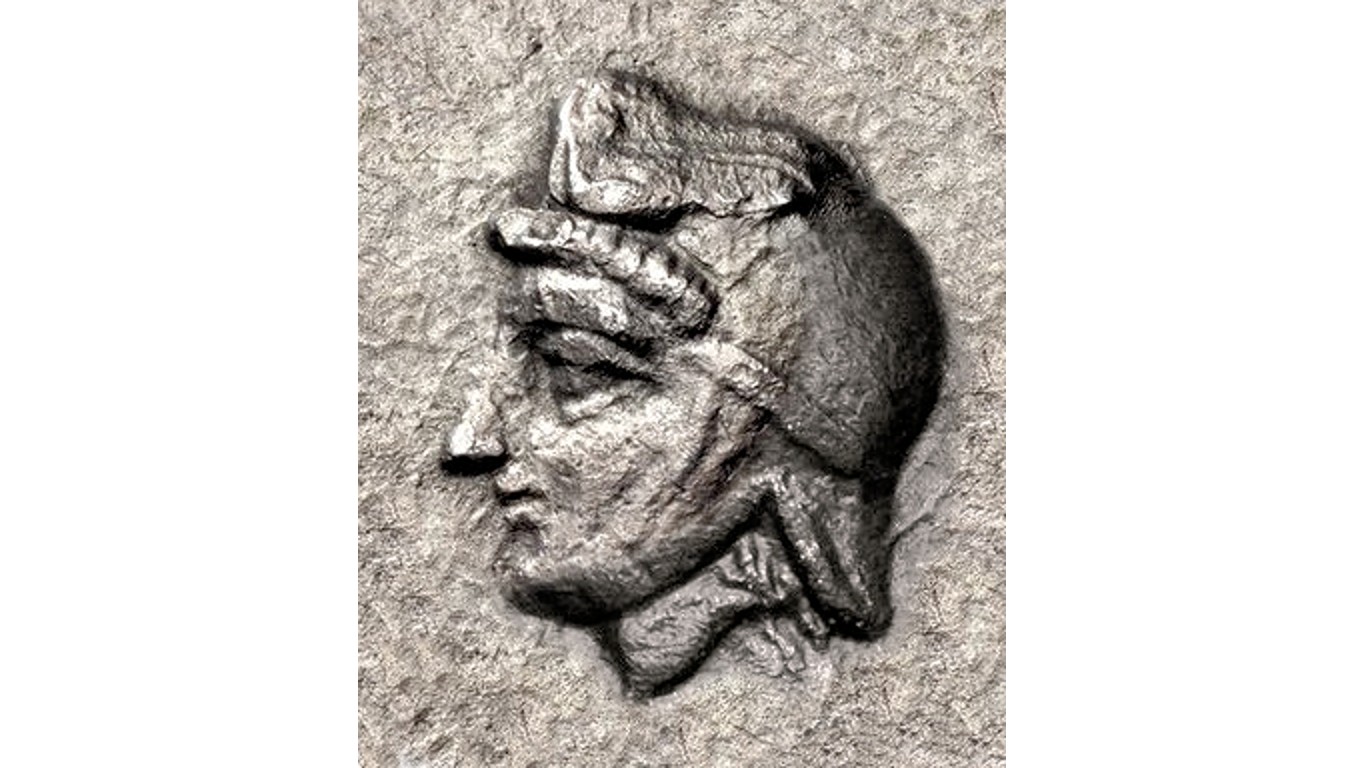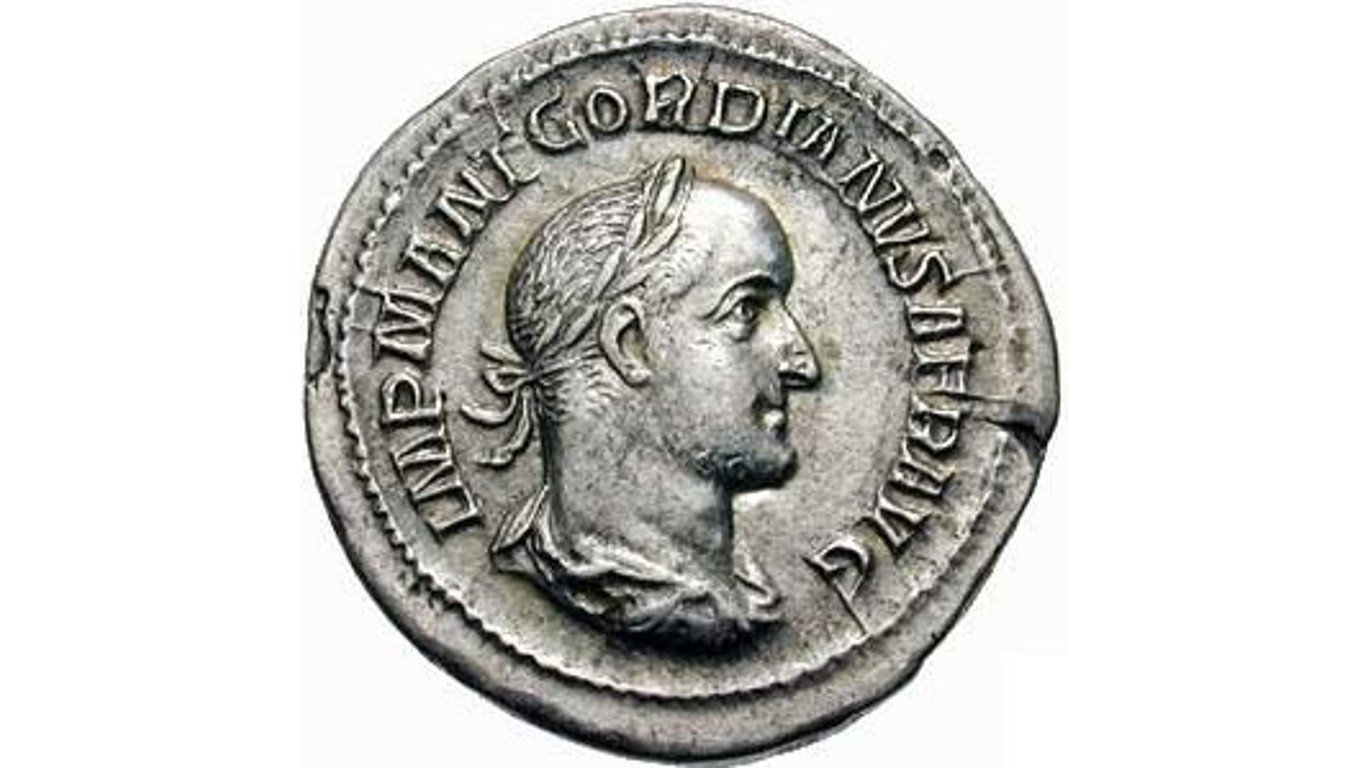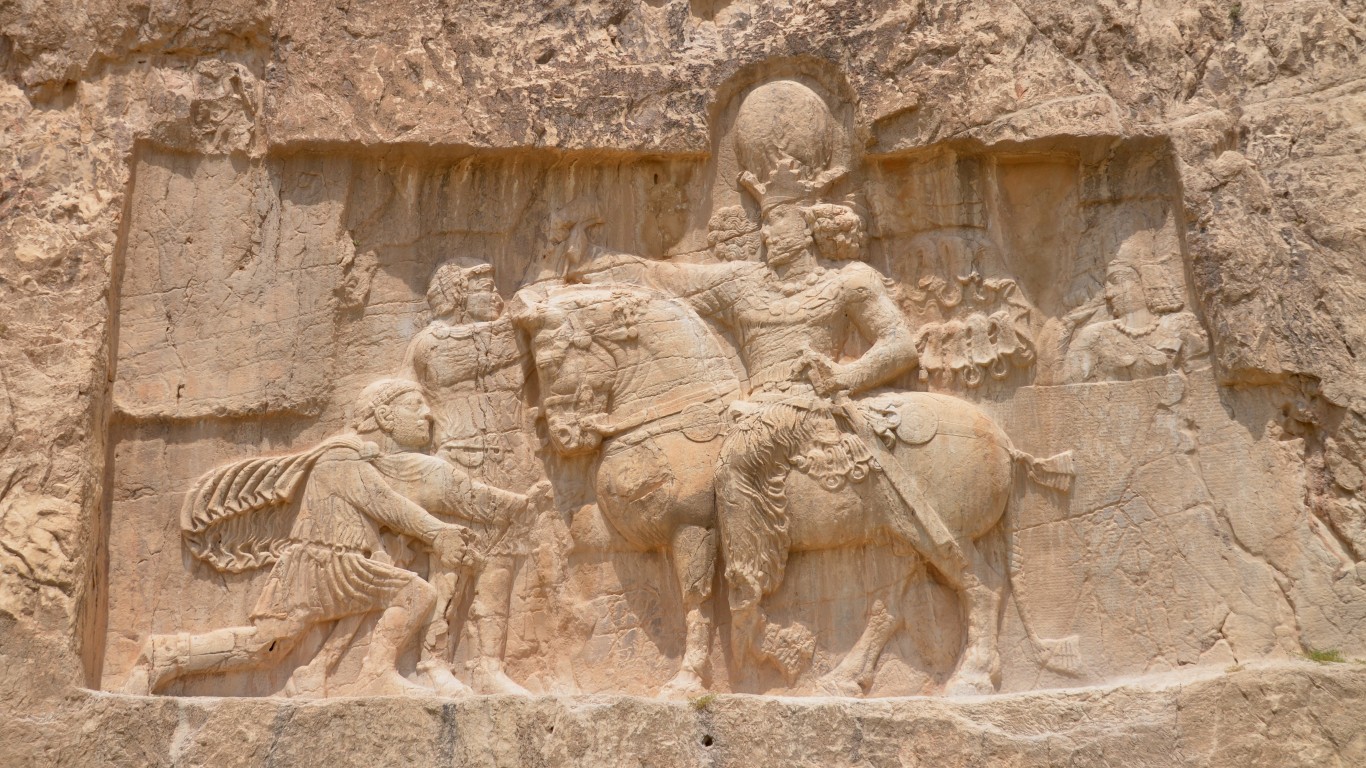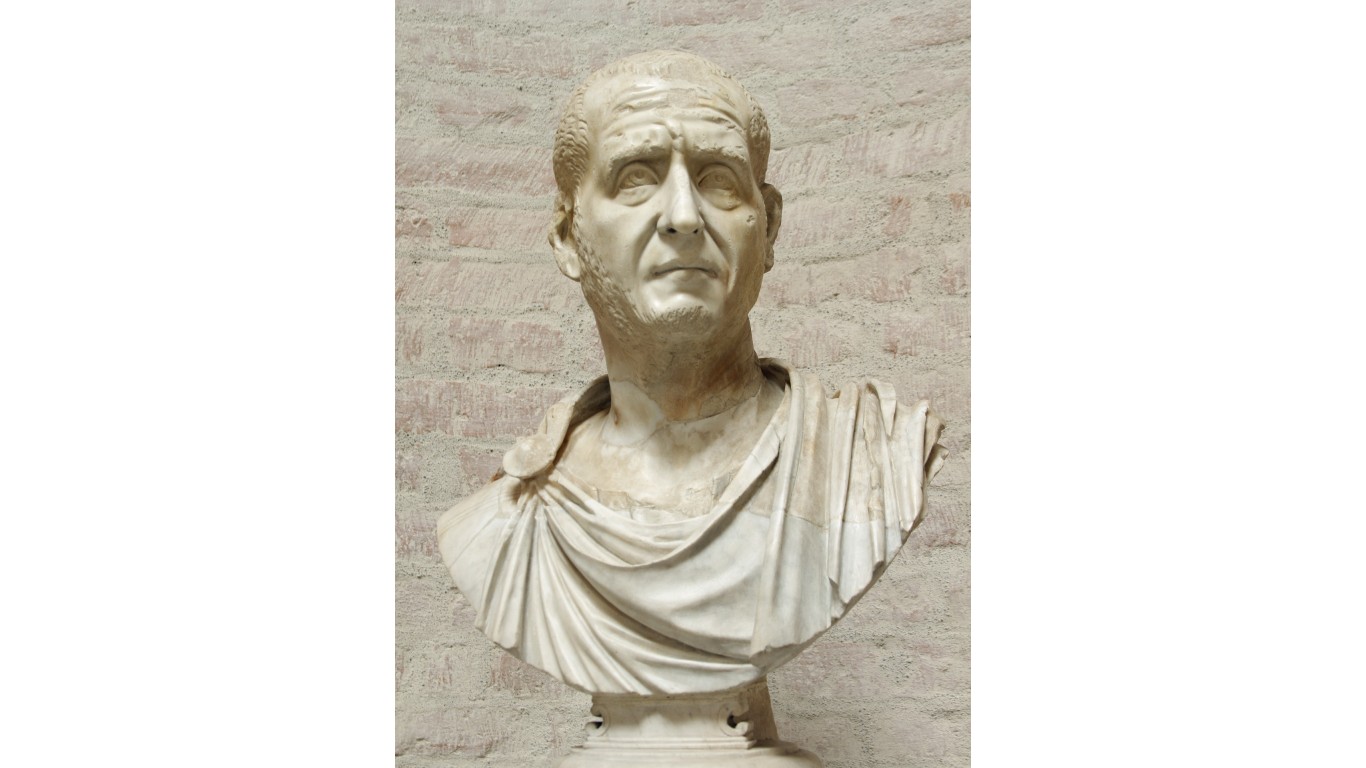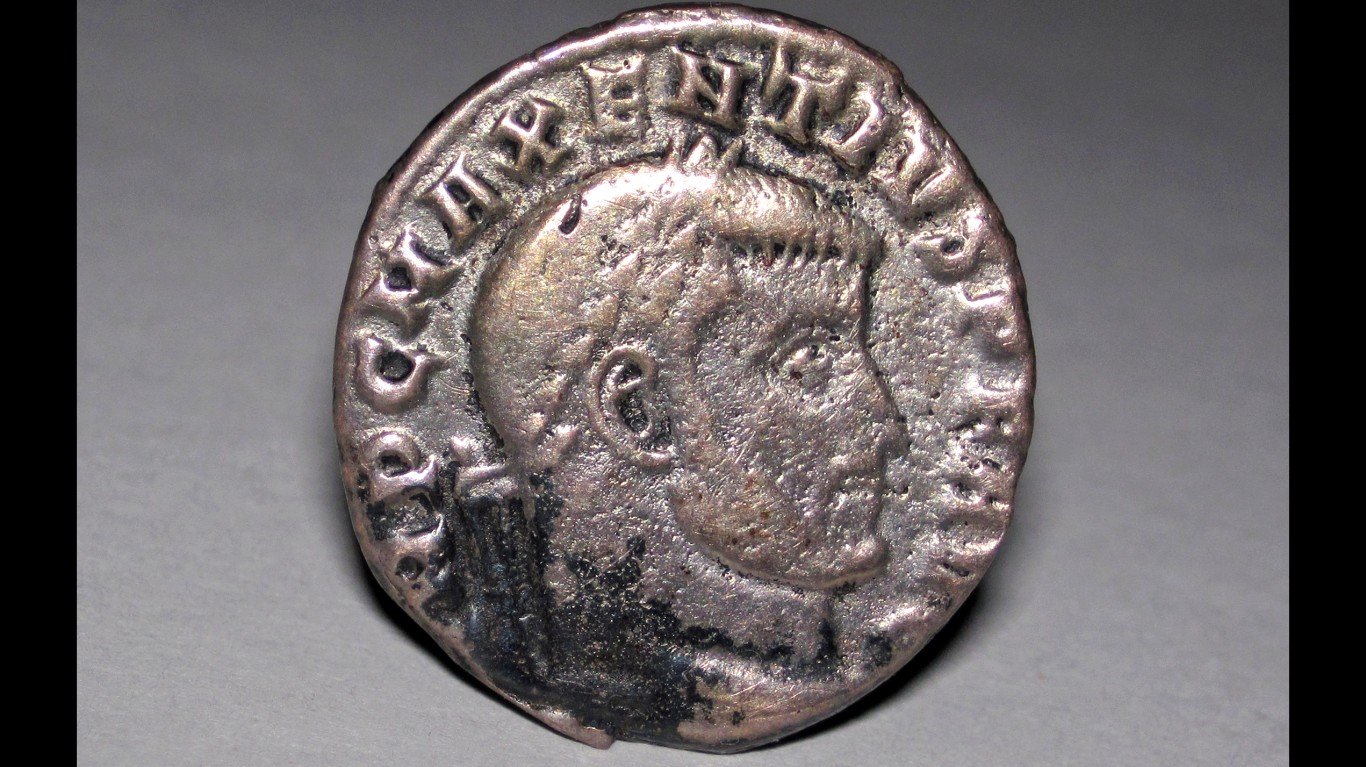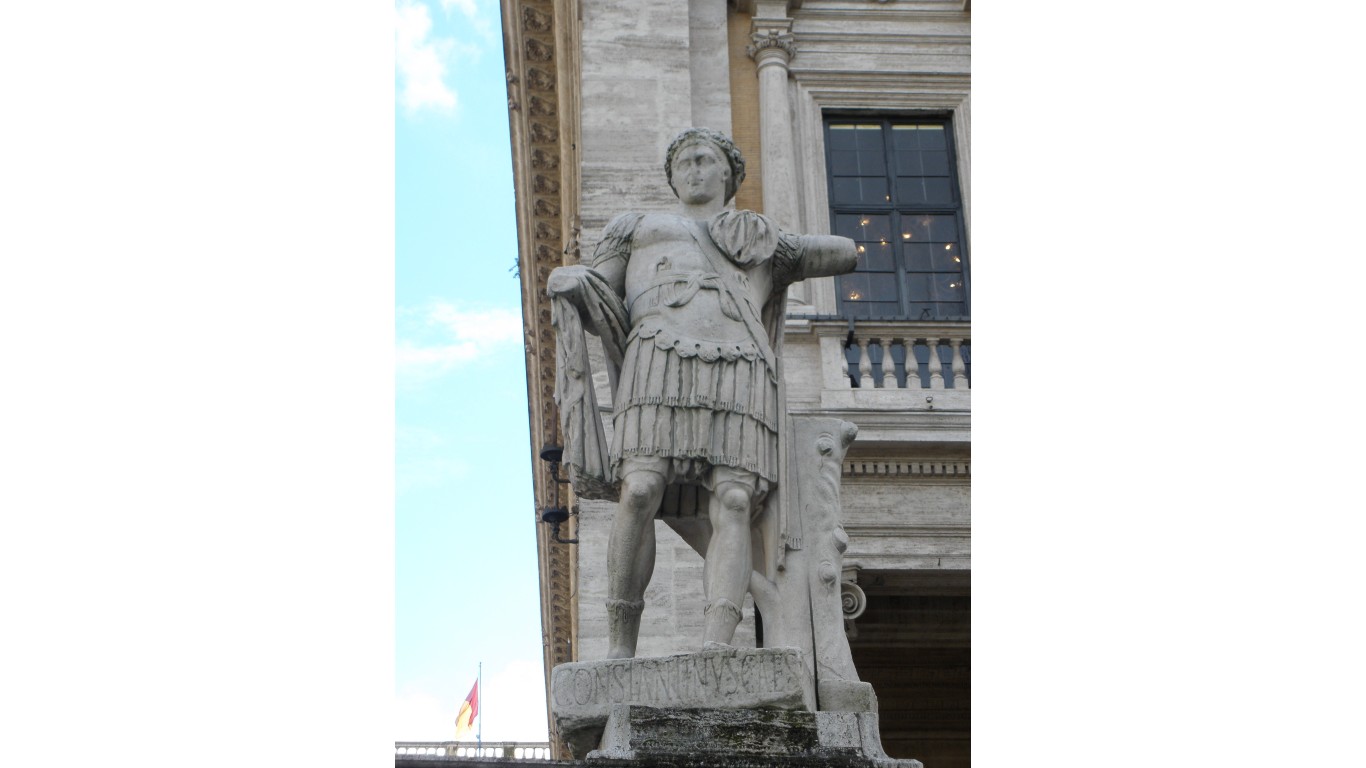Modern heads of state don’t lead troops into battle, but there have been long periods in human history when kings, emperors, tsars, or sultans would be at or very near the battlefront, often risking their lives in bloody-face-to-bloody-face battle alongside the troops they command. And some of them have died on the battlefield.
Take Richard III for instance. After his skeleton was discovered and excavated from under a parking lot in Leicester in 2012, we learned much more about the final moments of his brutal death during the Battle of Bosworth, the last major skirmish in the 15th-century War of the Roses. This witness from the grave showed that he had been attacked on all sides by enraged soldiers loyal to Henry Tudor, who would subsequently become King Henry VII. Richard’s body was then likely desecrated with an “insult injury” – a stab to the buttocks – while being unceremoniously hauled away naked on the back of a horse.
To paraphrase a Mel Brooks line from “History of the World”: Sometimes it’s not so good to be the king.
To assemble a list of kings who died in battle, 24/7 Tempo used resources such as MilitaryHistoryNow, HistoricUK, WorldHistory, the University of Leicester’s website, and Britannica, among others. Some of these royals died during the battle itself, while others succumbed to disease or the infirmities of old age while leading their forces into the fight.
At least 34 kings, emperors, tsars, sultans, and one 6-year-old Japanese ruler were killed in or very near fields of battle, dating back to six Spartan kings in Ancient Greece who fell in battle between 740 and 265 B.C., according to historical records. Seven Roman emperors also died in battle, all but one at the hands of other Romans. (These are the deadliest battles in world history.)
Twenty-eight rulers in the so-called modern era – history after 1 B.C. – died during skirmishes, too. This list is mostly populated by European kings, but also includes three Ottoman sultans and Constantine XI, whose death during the fall of Constantinople in 1453 ended the Byzantine Empire. (These are 30 of the most legendary warriors in history.)
It’s important to recognize that these are high-profile leaders. Other kings or chieftains may have died in battle, but their stories are lost to history.
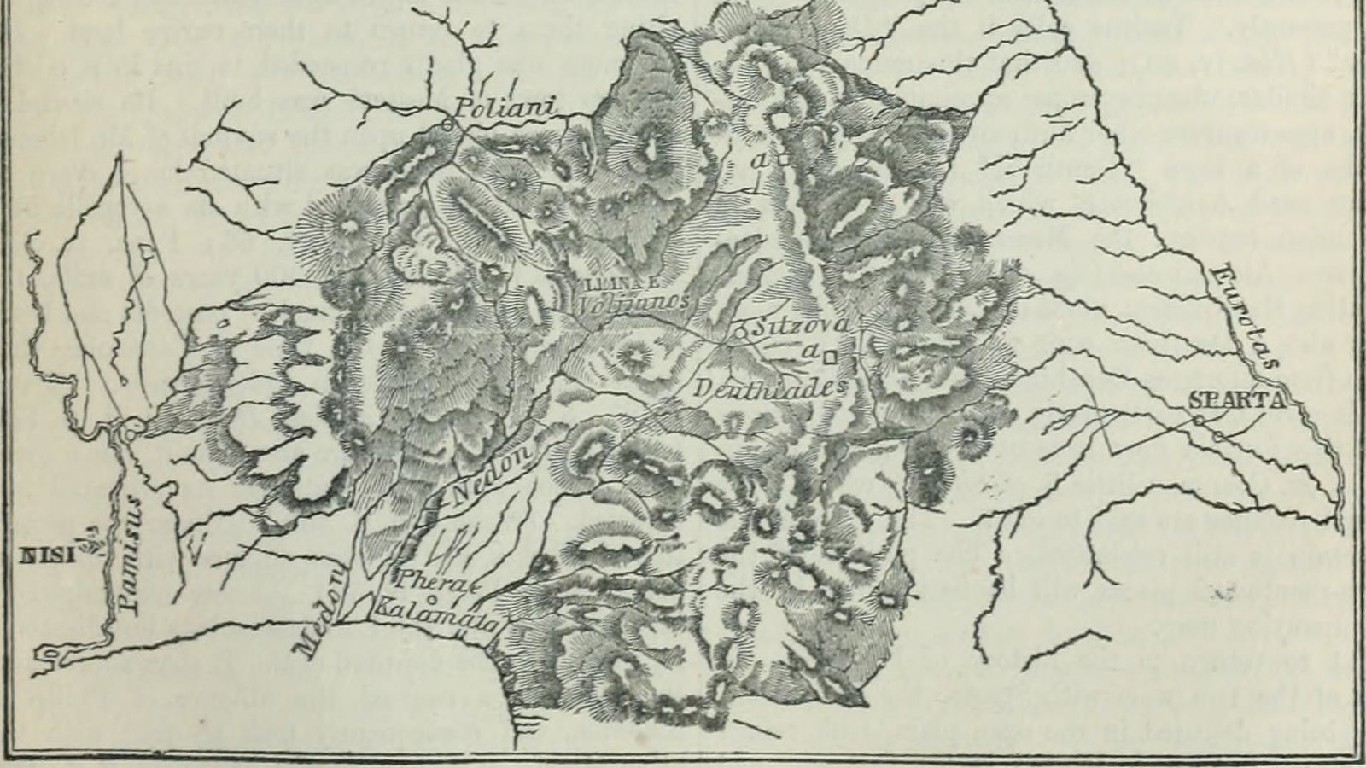
Teleclus, King of Sparta
> Last battle: Sparta
> Year: 740 B.C.
> Enemy: Messanians
Teleclus oversaw the Spartan conquest of the Achean-held towns of Amyclae, Pharis, and Geranthrae. Greek traveler and geographer Pausanias claims that shortly after capturing these places, Teleclus was killed by Messenians from the southwestern Pelopennese at the Sanctuary of Artemis Limnatis on Mount Ithome.
Leonidas, King of Sparta
> Last battle: Thermopylae
> Year: 480 B.C.
> Enemy: Persian Empire
This Spartan king ruled for about a decade before dying at the Battle of Thermopylae fighting the Persians. According to Greek historian Herodotus, Leonidas sent most of his soldiers away when he realized he had been outmaneuvered, but 300 soldiers chose to stay, fight, and die with him against an army of thousands. The battle was the subject of the 2006 action film “300,” starring Gerard Butler as the Spartan king.
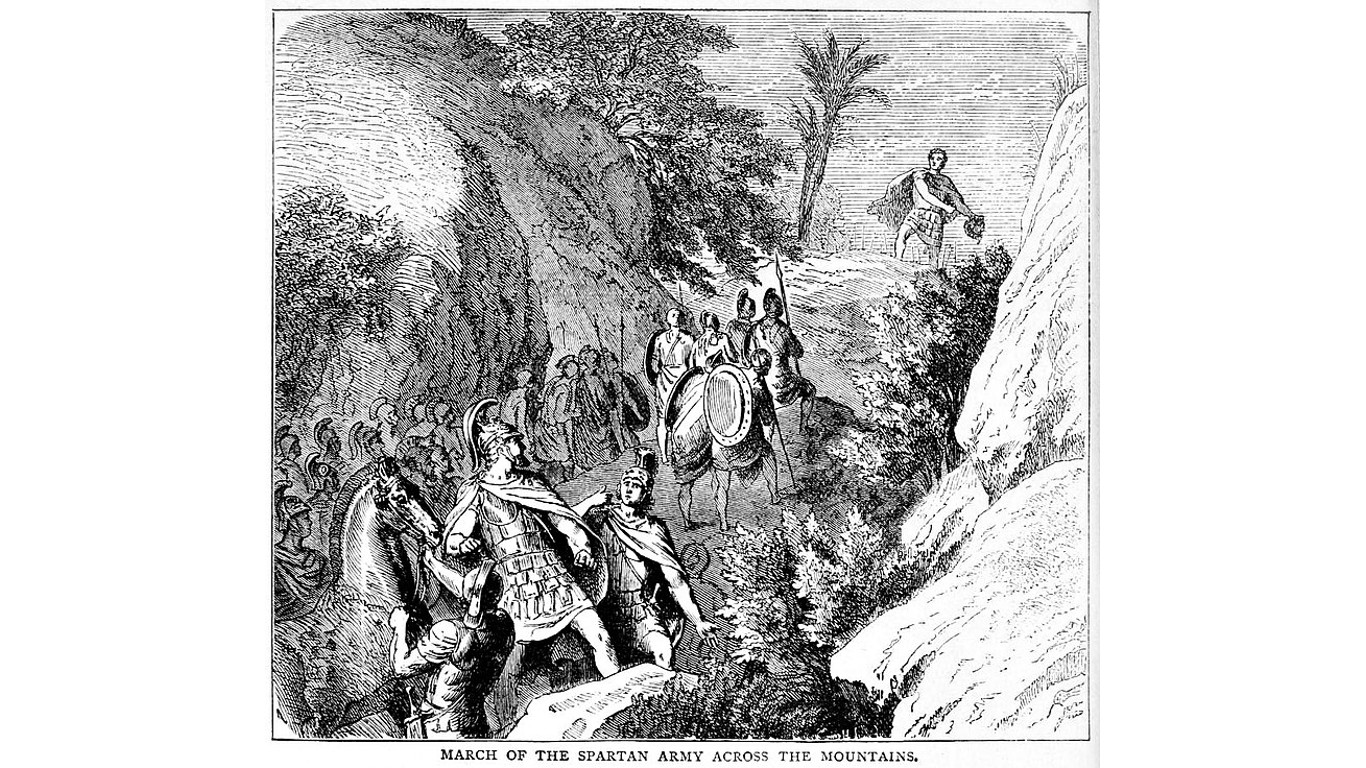
Cleombrotus I, King of Sparta
> Last battle: Leuctra
> Year: 371 B.C.
> Enemy: Thebes
Ancient Greece was made up of hundreds of city-states who often battled each other or formed alliances against each other or against outsiders like the Persians. Cleombrotus I was one of five Spartan kings killed in battle between 740 and 265 B.C. He ruled for nine years before his fatal wounding at the Battle of Leuctra against Thebans, according to ancient Greek historian Diodorus.
Archidamus III, King of Sparta
> Last battle: Manduria
> Year: 338 B.C.
> Enemy: Lucanians
Archidamus III was a commander sent to aid the Spartans after their defeat at the Battle of Leuctra – the one in which Cleombrotus I was killed. He proved to be a courageous commander, defeating the Arcadians in a battle in 367 B.C. and successfully defending Sparta from the Thebans in 362 B.C.. But as king, he died with his mercenary army at Manduria, near Tarentum (modern day Tarento, Italy), in the Sacred War against the Lucanians.
Agis III, King of Sparta
> Last battle: Megalopolis
> Year: 331 B.C.
> Enemy: Macedonia
Like some other Spartan kings, Agis III ruled for a short period of time, about seven years. The son of Archidamus III, who was killed in 338 B.C. battling Lucanians in southern Italy, Agis III attempted to lead Greek cities in revolt while Alexander the Great was romping his Macedonian army across Anatolia (modern-day Turkey). The plan proved foolhardy, and Agis III was killed by forces led by Antipater, Alexander’s regent, at Megalopolis in the Peloponnese.

Areus I, King of Sparta
> Last battle: Corinth
> Year: 265 B.C.
> Enemy: Macedonia
Areus ruled Sparta for about 44 years, a lifetime compared to other Spartan kings who died in battle. As with Agis III, the Macedonian domination of the Greek Islands during this period in history led to his downfall. He was killed in battle near Corinth in the Peloponnese during the Chremonidean War.
Roman Emperor Gordian II
> Last battle: Carthage
> Year: 238
> Enemy: Civil war
Just three weeks into his reign, Gordian II died in battle defending Carthage (in modern day Tunisia) during a Roman civil war, a viciously tumultuous period that saw six roman emperors in the same year Gordian II was killed. His father and predecessor, Gordian I, hanged himself upon hearing of his son’s death.
Roman Emperor Philip the Arab
> Last battle: Beroea
> Year: 249
> Enemy: Decius
Eleven years after the death of Gordian II and his despondent, suicidal father, Philip the Arab died in a fight against a rebellion led by Decius, who became the next Roman emperor. Philip, who was born in modern day Syria, ruled for only five years after plotting against Gordian III, the teenage nephew of Gordian II who was murdered by Roman soldiers in Zaitha on the Euphrates River that led to Philip’s ascension.
Roman Emperor Decius
> Last battle: Abrittus
> Year: 251
> Enemy: Goths
The rule of Emperor Decius, whose rebellion led to the death of Emperor Philip the Arab, was short-lived. He ruled for only two years before he was cut down fighting Scythians and Goths at the Battle of Abritus. His son Herennius Etruscus was also killed. It was the first time a Roman emperor was killed by outside forces rather than through interior conflict.
Roman Emperor Maxentius
> Last battle: Milvian Bridge
> Year: 312
> Enemy: Constantine
The 58th Roman emperor ruled for six years, but the winds of the empire were changing. Constantine the Great – the first Christian convert to become emperor, responsible for splitting the empire in two – was amassing power with his father, Flavius Constantius, in the empire’s eastern provinces, including modern day Britain. Civil wars erupted as a result, including one against Emperor Maxentius, who drowned in Tiber River after Constantine’s forces routed his troops.
Roman Emperor Constantine II
> Last battle: Aquileia
> Year: 340
> Enemy: His brothers
Twenty-eight years after the death of Emperor Maxentius, Constantine II, son of Constantine the Great, was killed in Italy fighting his brothers for control of the empire following their father’s death. Constantine II ruled for only three years.
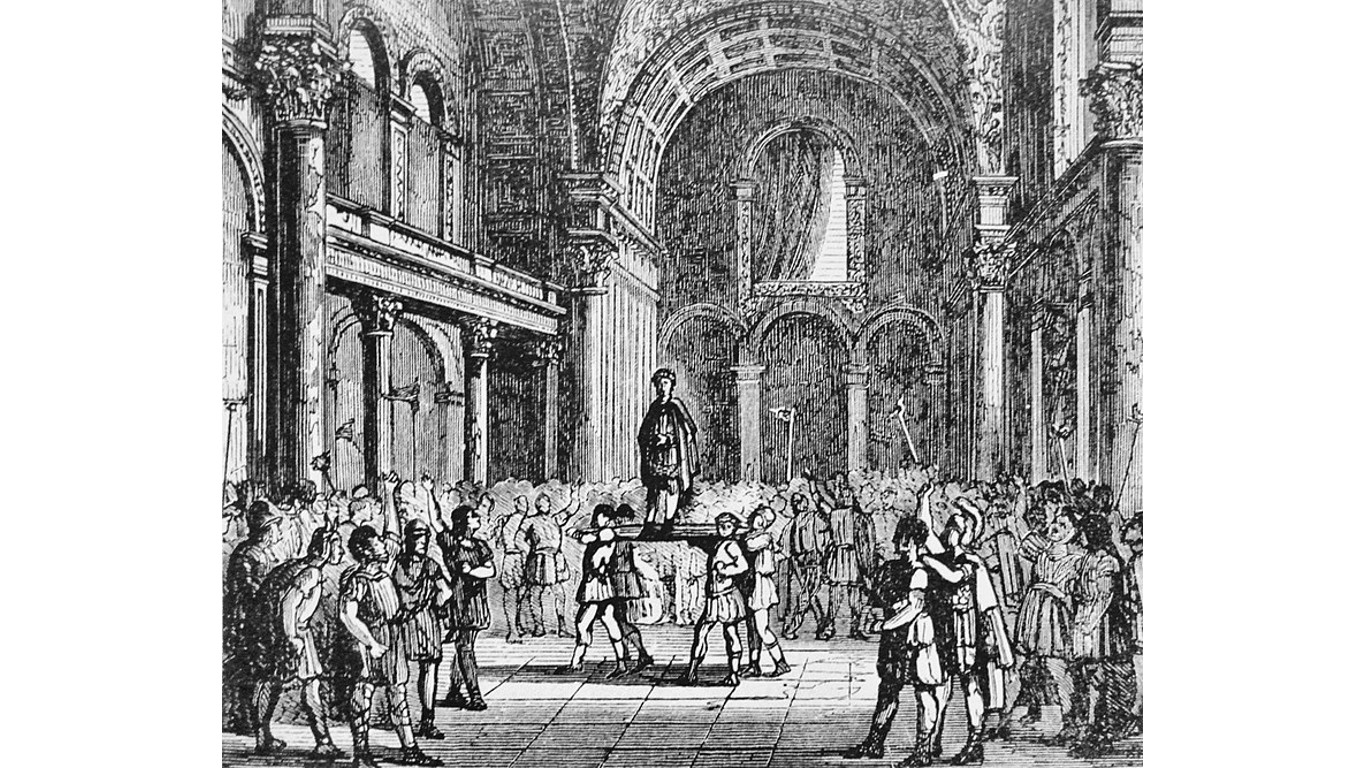
Roman Emperor Julian
> Last battle: Maranga
> Year: 363
> Enemy: Sassanid Empire
The last pagan Roman emperor died in a horrendous way: speared through the gut by a Persian soldier in the Battle of Samarra in modern-day Iraq. Emperor Julian of the Eastern Empire attempted to revive old Roman religious practices to slow the spread of Christianity, earning him the name Julian the Apostate.
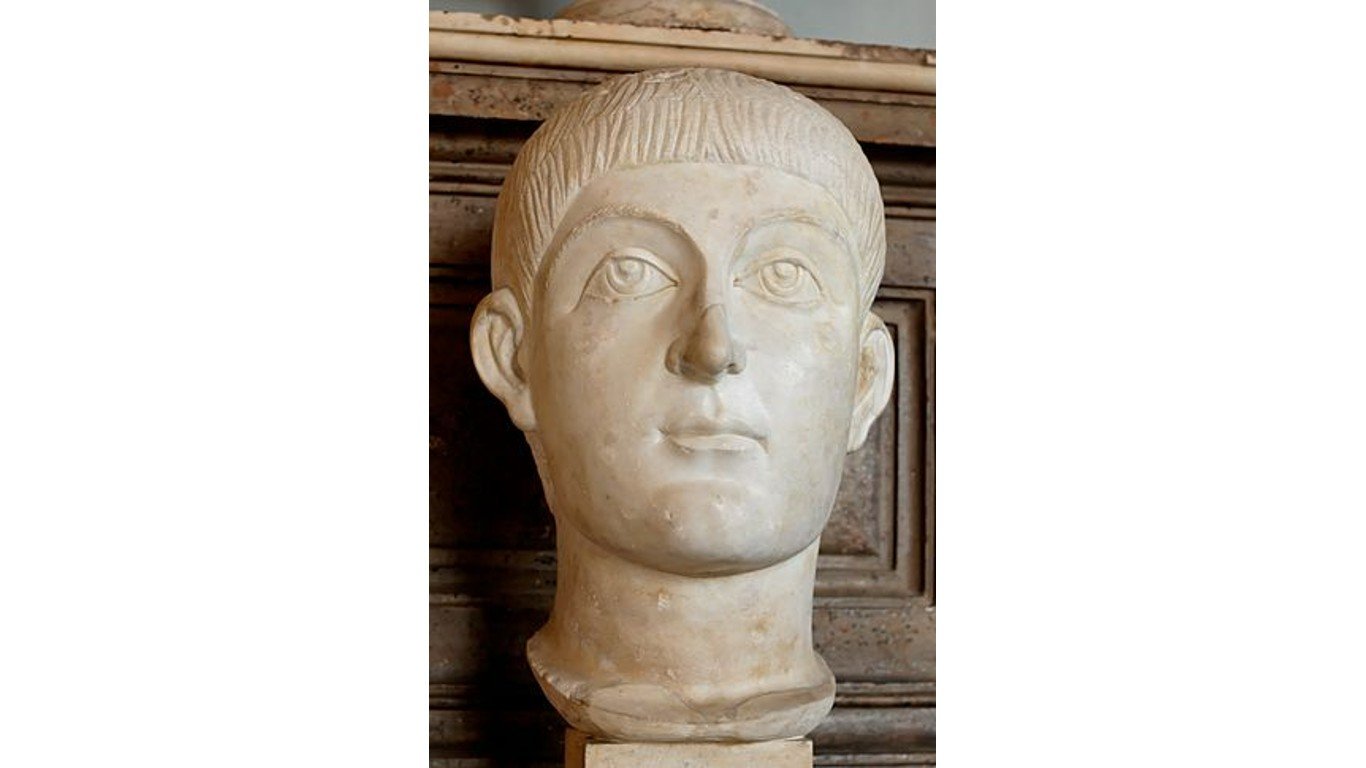
Eastern Roman Emperor Valens
> Last battle: Adrianople
> Year: 378
> Enemy: Goths
Fifteen years after the death of Emperor Julian the Apostate, Eastern Roman Emperor Valens died in a battle against the Goths. By one account, he was fatally struck in the face by an arrow. Another account says he was taken off the battlefield wounded and was then burned alive in a hut by enemy soldiers.
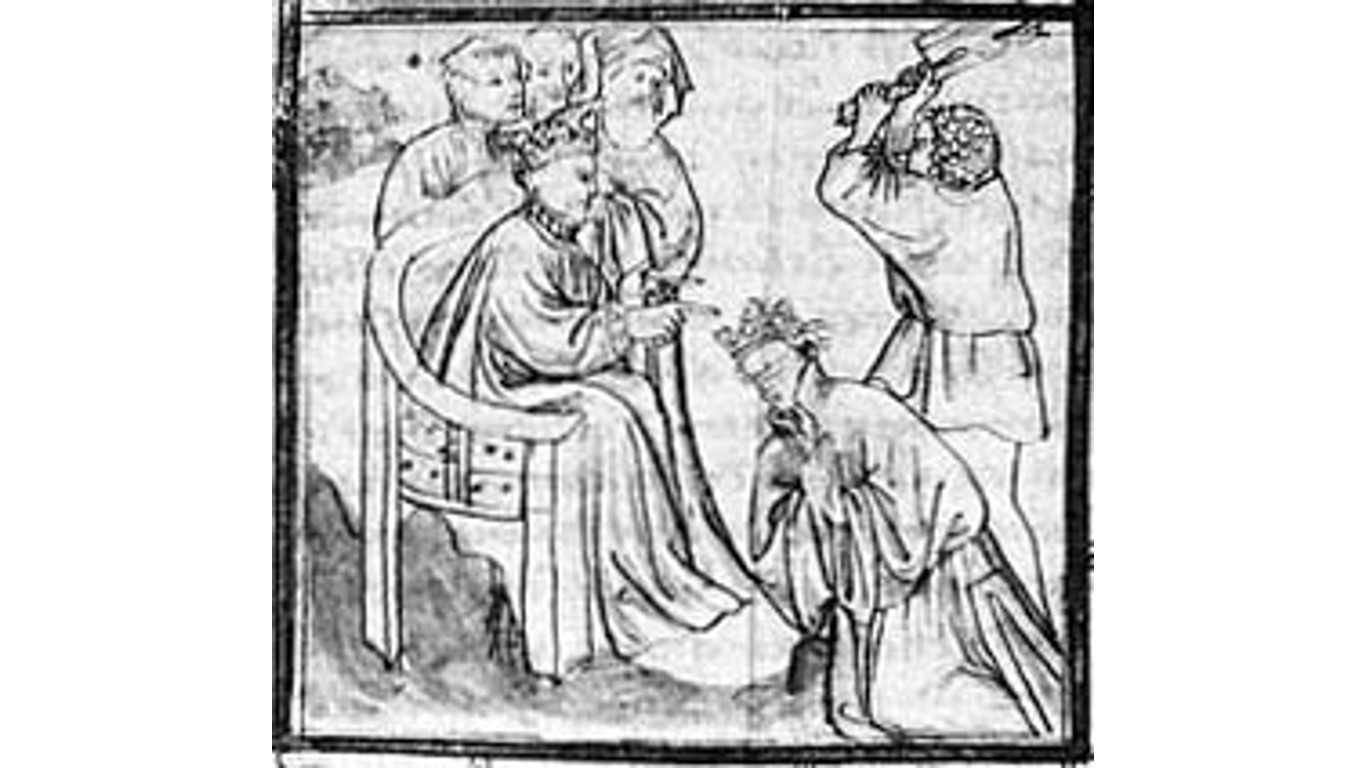
Chlodomer, King of the Franks
> Last battle: Vézeronce
> Year: 525
> Enemy: Burgundian army
The first Western European king to die in battle was Chlodomer, one of the sons of Clovis I – the first Frankish king, who ruled much of what became modern-day France, Belgium, Luxembourg, and Germany. Chlodomer was killed on his second campaign against the Burgundians at the Battle of Vézeronce in southeastern France.

Constantine I, King of Scotland or Alba
> Last battle: Inverdovat in Fife
> Year: 877
> Enemy: Norsemen
Constantine I spent much of his 15-year reign battling Norsemen, including Danish king Olaf the White and the Viking chieftain Thorstein the Red. Vikings from Dublin and Yorkshire established a base in Fife to raid settlements on the eastern side of modern-day Scotland. Constantine I died in a battle against the Norse at Inverdovat, located near what is now Newport-on-Tay, a suburb of Dundee.

Robert I, King of France
> Last battle: Soissons
> Year: 923
> Enemy: Carolingian army
Robert I ruled as king of West Francia, the western part of the Frankish Empire in what today makes up about half of France and a portion of northern Spain, for less than a year. Eastern Frankish King Henry I recognized Robert I’s kingship after West Francian King Charles III express favoritism toward certain lords that angered the Frankish aristocracy. Robert was killed in a battle in northern France against Charles’s army despite victory by his troops.
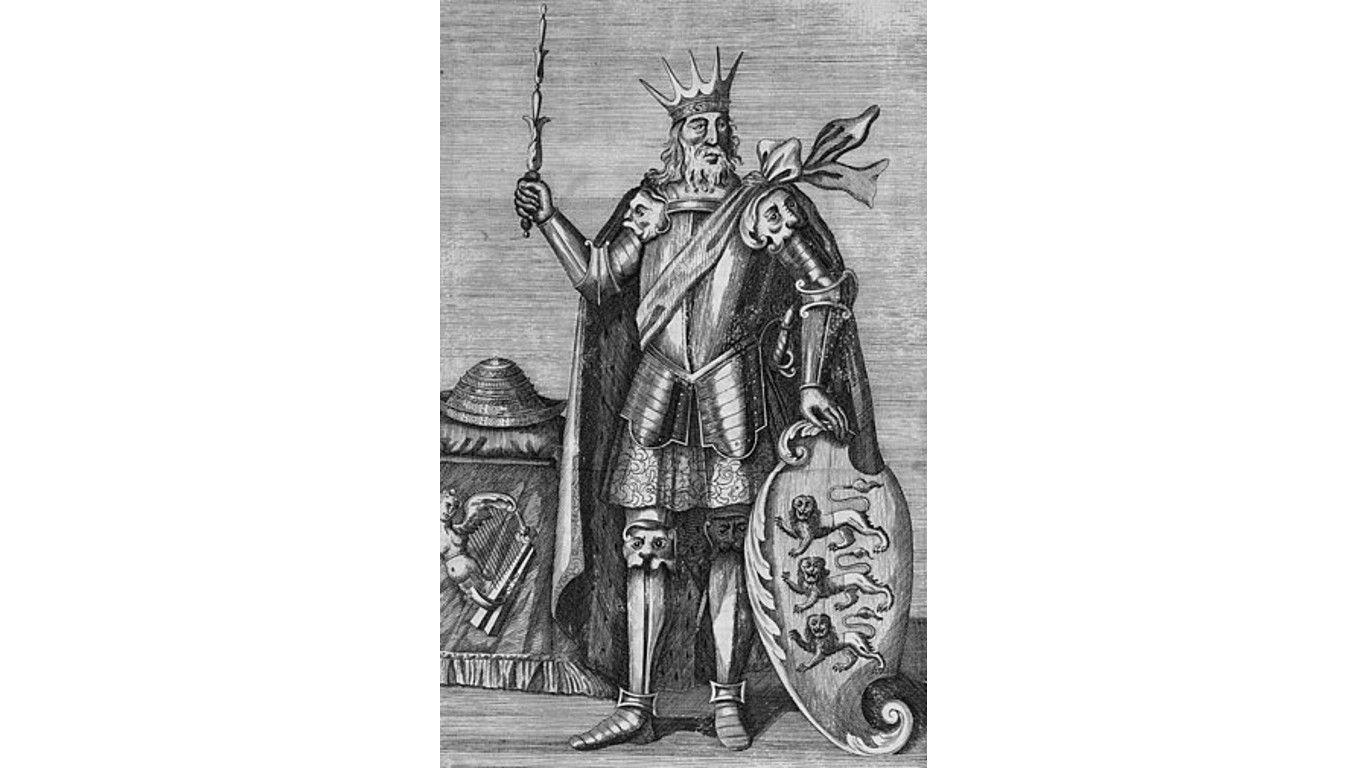
Brian Boru, High King of Ireland
> Last battle: Clontarf
> Year: 1014
> Enemy: Viking mercenaries
Boru ruled for 12 years, but his role was so great that he spawned the dynastic family name O’Brien (aka O’Brian, or “descent of Brian”). Before becoming the leader of the Irish, Brian was king of the small state of Dál Cais and king of Munster. Men from Leinster and Dublin rebelled against his rule as high king, and though Brian’s son Murchad successfully routed the rebellion, Brian was found in a tent by fleeing soldiers and was hacked to death. At 72 or 73, he was too old to lead the battle.
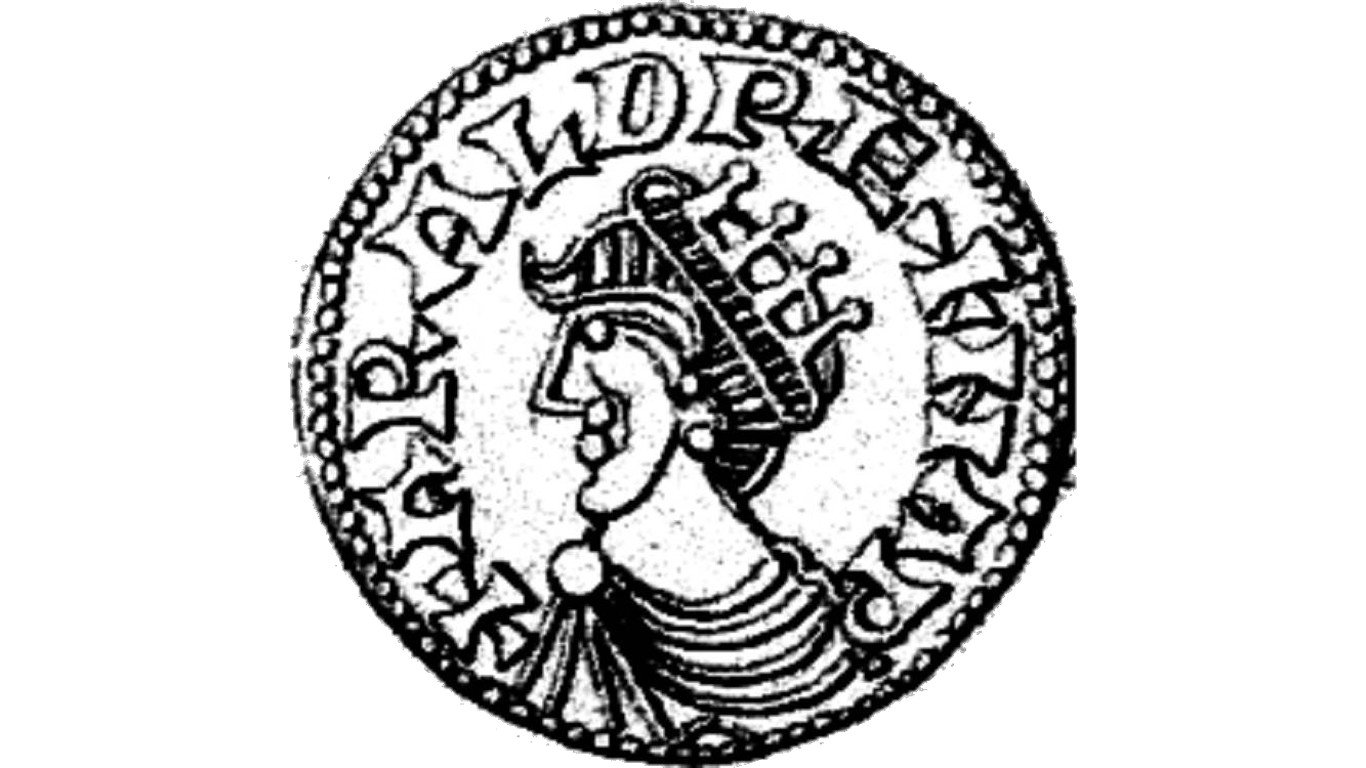
Harald III Sigurdsson, King of Norway
> Last battle: Stamford Bridge
> Year: 1066
> Enemy: Anglo-Saxons
Known as Harald the Ruthless for his rough treatment of Norwegian chieftains, the king lost support of locals in his failed effort to conquer Norway. Nevertheless, his aggressive leadership kept him in power for 21 years until his death at Stamford Bridge in Yorkshire, in a battle against the English.
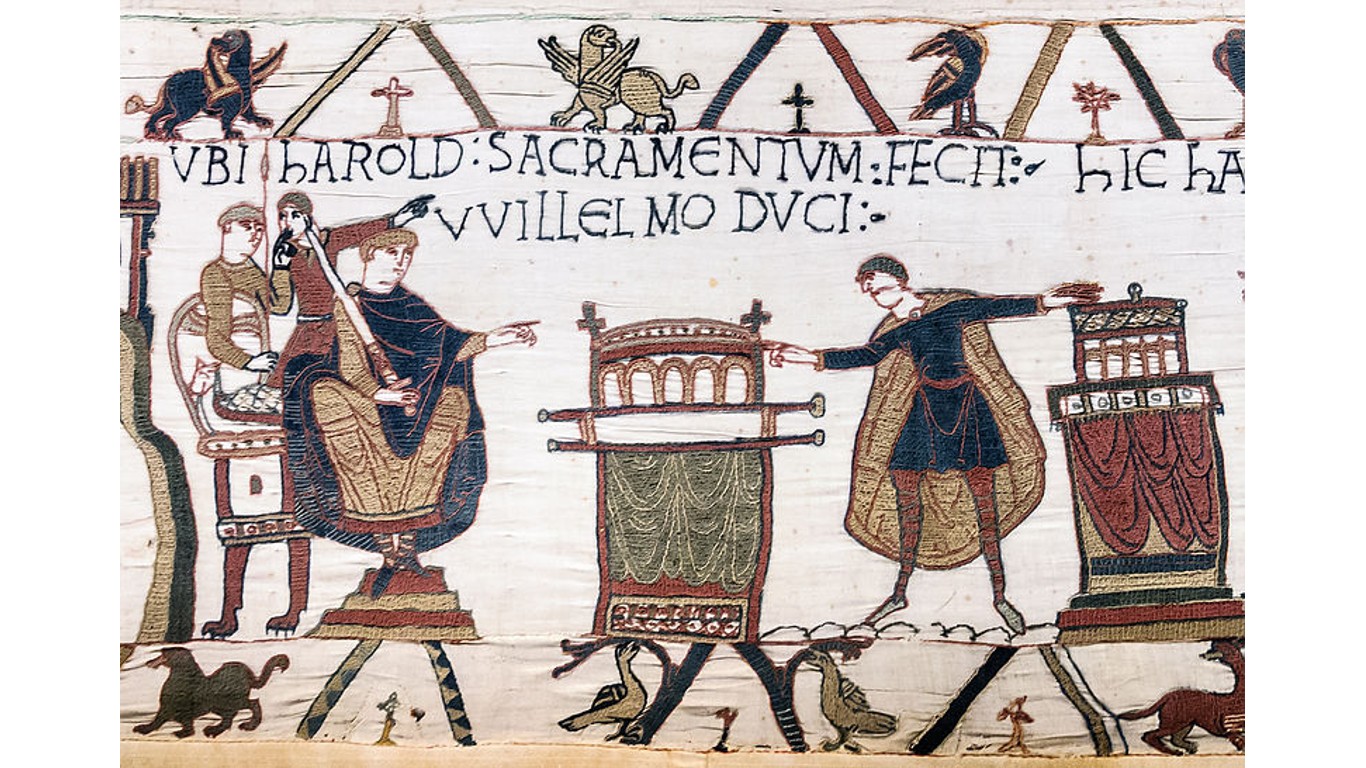
Harold II, Anglo-Saxon King of England
> Last battle: Hastings
> Year: 1066
> Enemy: Normans
Another king by the name of Harold/Harold died in battle in 1066. In this case, it was Harold II, also called Harold Godwinson, the head of a powerful English noble family. Harold II’s crown was challenged by William, Duke of Normandy, aka William the Conqueror. At the same time, Harold III, the king of Norway (no relation to Godwinson) had England in his sights. Harold III was killed attempting to conquer England while Harold II lost his life at the Battle of Hastings, leaving William the Conqueror to become the first Norman king of England.
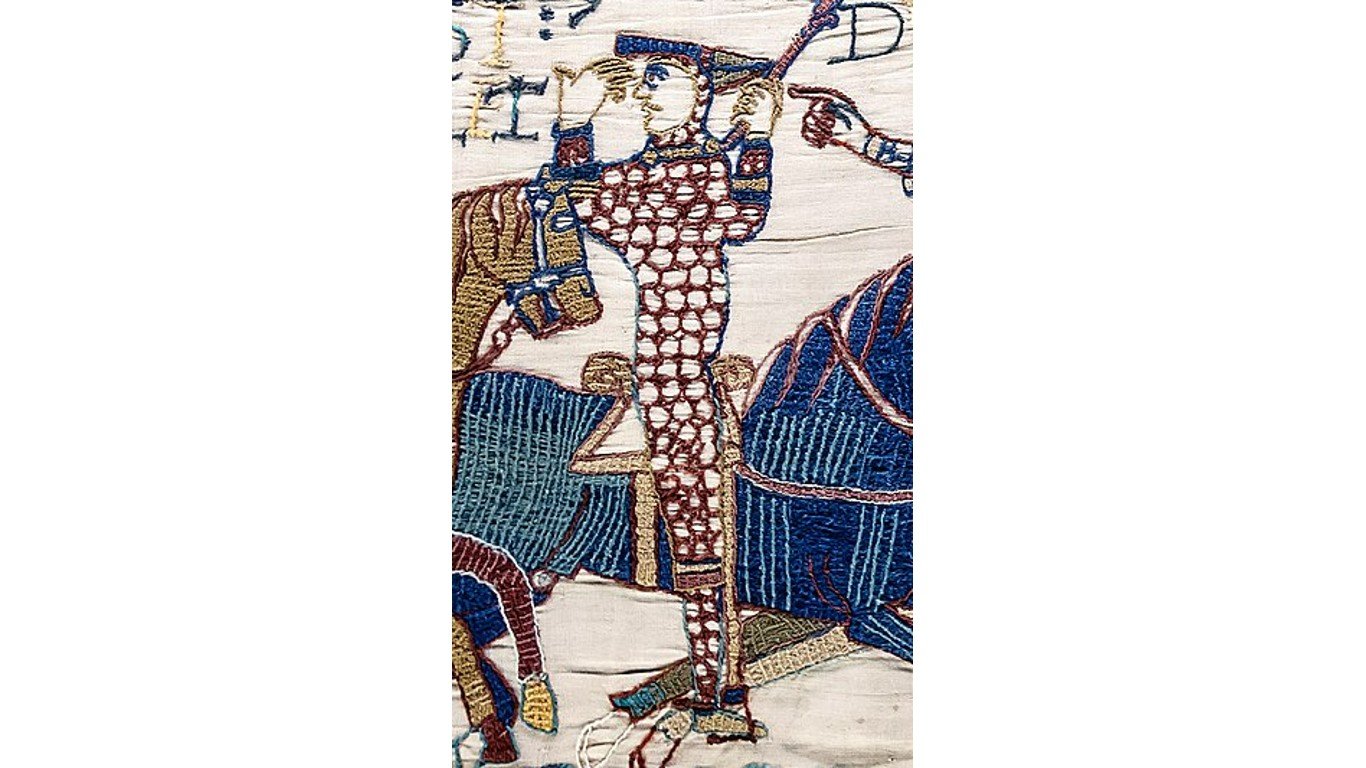
William the Conqueror, King of England
> Last battle: Mantes
> Year: 1087
> Enemy: French
William I was the illegitimate son of Robert I and his concubine Herleva, the daughter of a tanner. He earned his nickname after rising in power (he became a knight by the age of 15) before conquering England to become the country’s first Norman king after the Battle of Hastings in 1066. He spent a considerable amount of time ruling from Normandy, preoccupied with unrest there. William I died five weeks after he was either injured or fell ill during that attack.
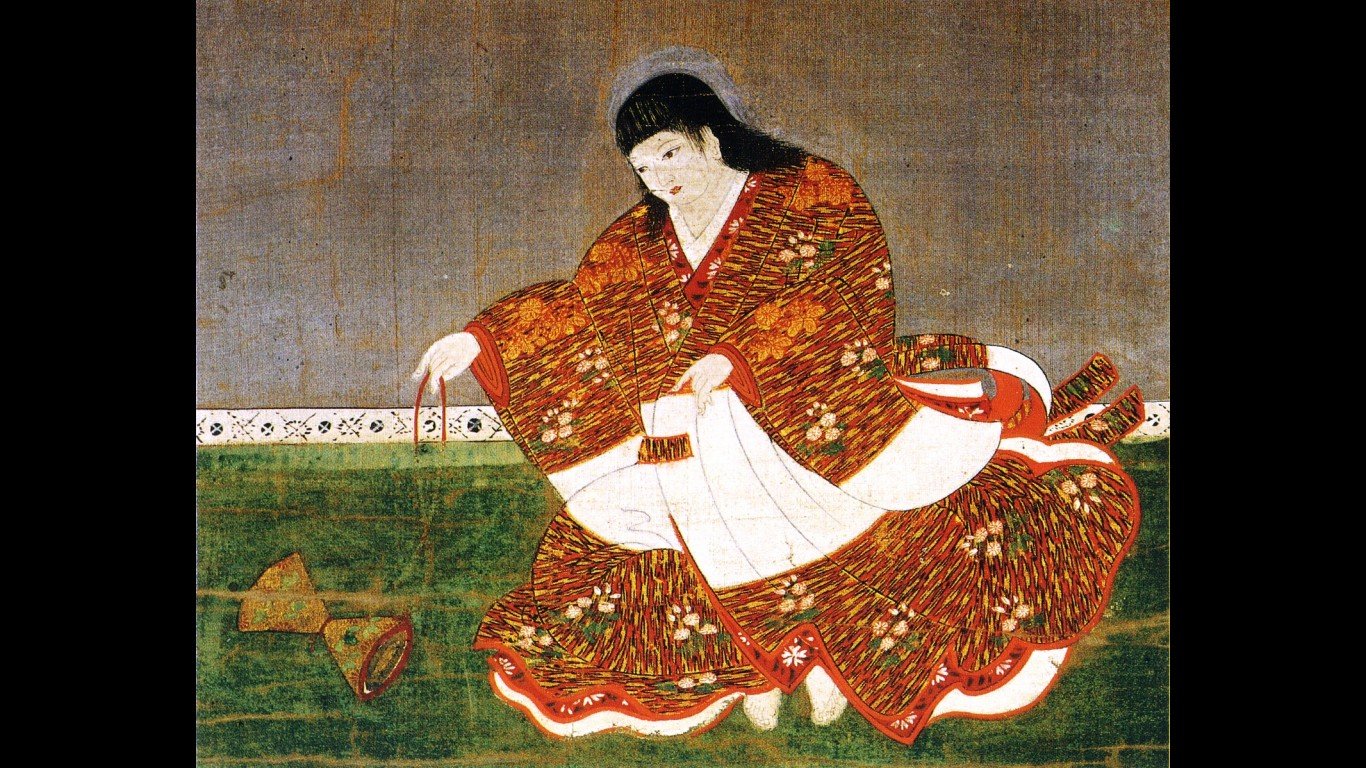
Antoku, Emperor of Japan
> Last battle: Dan-no-ura
> Year: 1185
> Enemy: Rival Minamoto clan
Emperor Antoku is the only Asian ruler on this list. Placed on the throne at the age of 2 by the Taira clan, one of several warring factions during a tumultuous time in Japanese history, he was only 6 years old when he was forced, with his attendants, to drown in the sea rather than be captured by opposing forces during the naval Battle of Dan-no-ura in Japan’s Inland Sea.
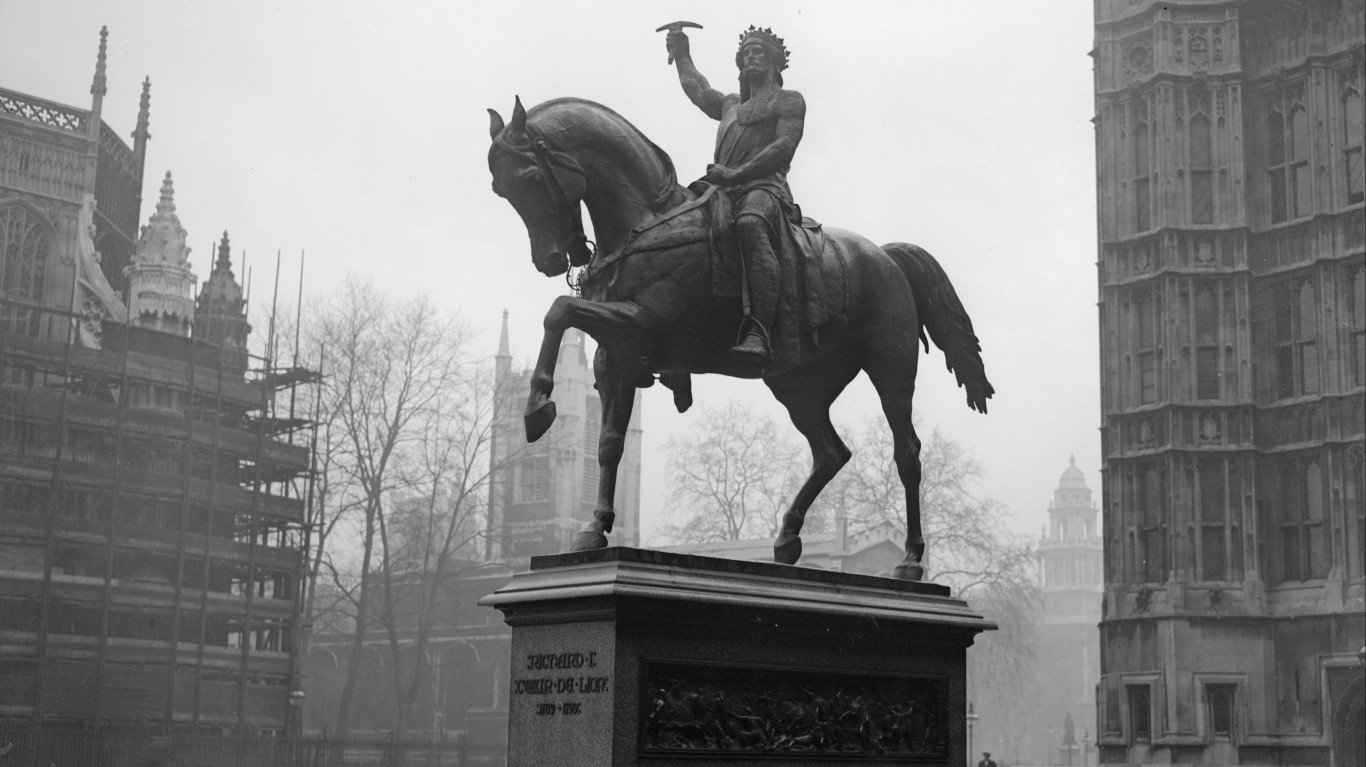
Richard I, King of England
> Last battle: Aquitaine
> Year: 1199
> Enemy: French
Richard I, son of King Henry II and Queen Eleanor of Aquitaine, earned the name “the Lionheart” for his successes and bravery in battle, particularly against Muslim leader Saladin during Richard’s crusader adventures in the Levant. Though he ruled England for a decade, he spent very little time there, had little interest in being king, and likely didn’t even speak English. He was shot in the neck by a crossbow bolt while quelling a rebellion of French nobles. He died after the wound became septic.

Konstantin Tih, Tsar of Bulgaria
> Last battle: Bulgarian revolt
> Year: 1277
> Enemy: Discontented peasants
Konstantin Tih was one of two Bulgarian tsars who died in battle following 20 years as ruler at a time when the neighboring Byzantine Empire was collapsing. He spent much of his time battling the Mongols, but what took him out was death on the battlefield during a civil war against his own people.
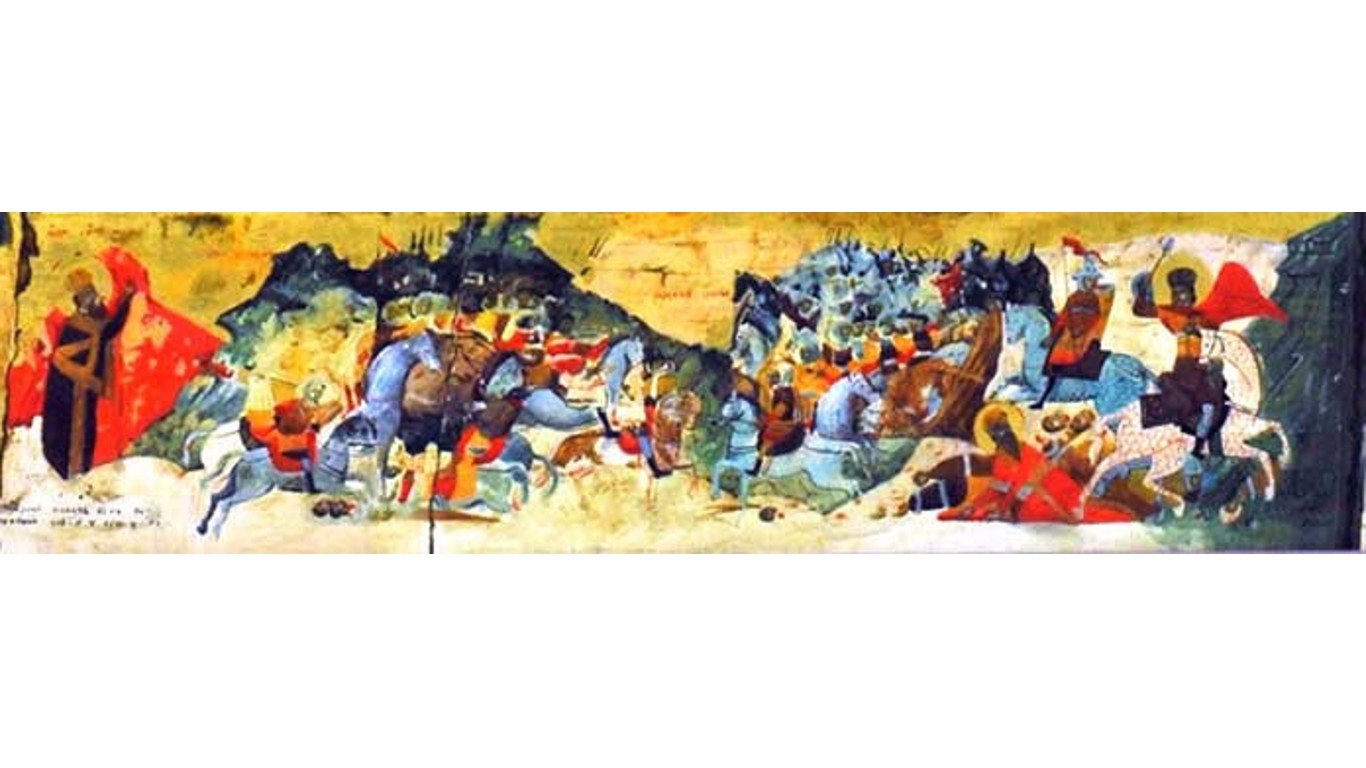
Michael Asen III, Tsar of Bulgaria
> Last battle: Velbazhd
> Year: 1330
> Enemy: Serbs
Fifty-three years after Konstantin Tih was killed in action during a civil war in the Bulgarian Empire, Michael III would be killed seven years into his own reign while leading a fight against soldiers of the Kingdom of Serbia at the Battle of Velbazhd, near the present-day town of Kyustendil. Accounts of his death vary, including one that claims he was crushed under his horse.

John, King of Bohemia
> Last battle: Crécy
> Year: 1346
> Enemy: English
John of Luxembourg, who became king of Bohemia, ruled for 36 years, winning his reputation through successful campaigns across Europe despite losing popularity at home due to a combination of high spending and high taxation. Though he spent the last decade of his life blinded by ophthalmia, he continued to rule and maintain his presence on the battlefield. He was struck down by English archers while fighting at the Battle of Crécy between the French Army led by King Philip VI and the English led by King Edward III during the Hundred Years’ War.
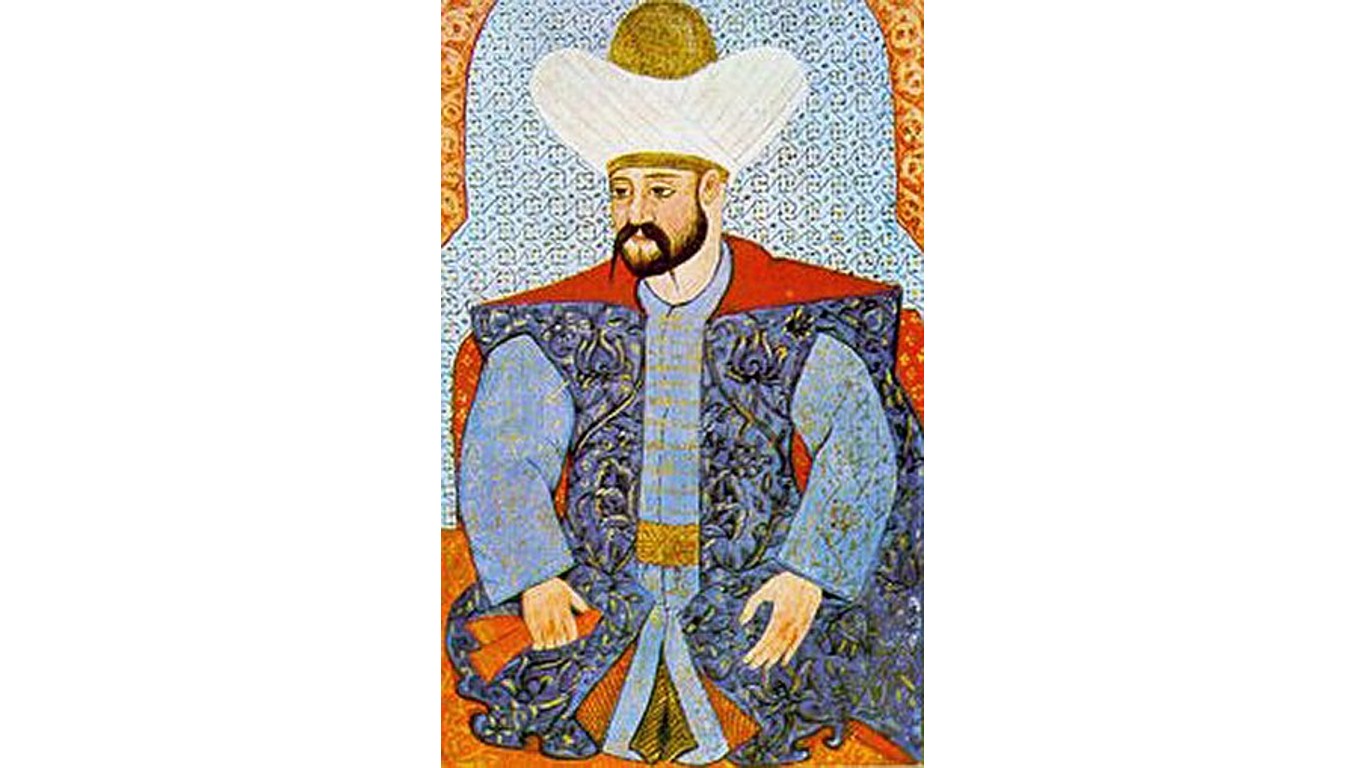
Ottoman Sultan Murad I
> Last battle: Kosovo
> Year: 1389
> Enemy: Serbs
In his 29th year as ruler, Murad I is one of three Ottoman sultans who died in battle. He is believed to have been around 63 when he was killed by a Serbian noble who pretended to be a defector during the Battle of Kosovo that pitted the Ottomans against a coalition of Serbians and Bosnians. Murad I was instrumental in creating numerous Ottoman institutions and military offices that helped the empire last six centuries.
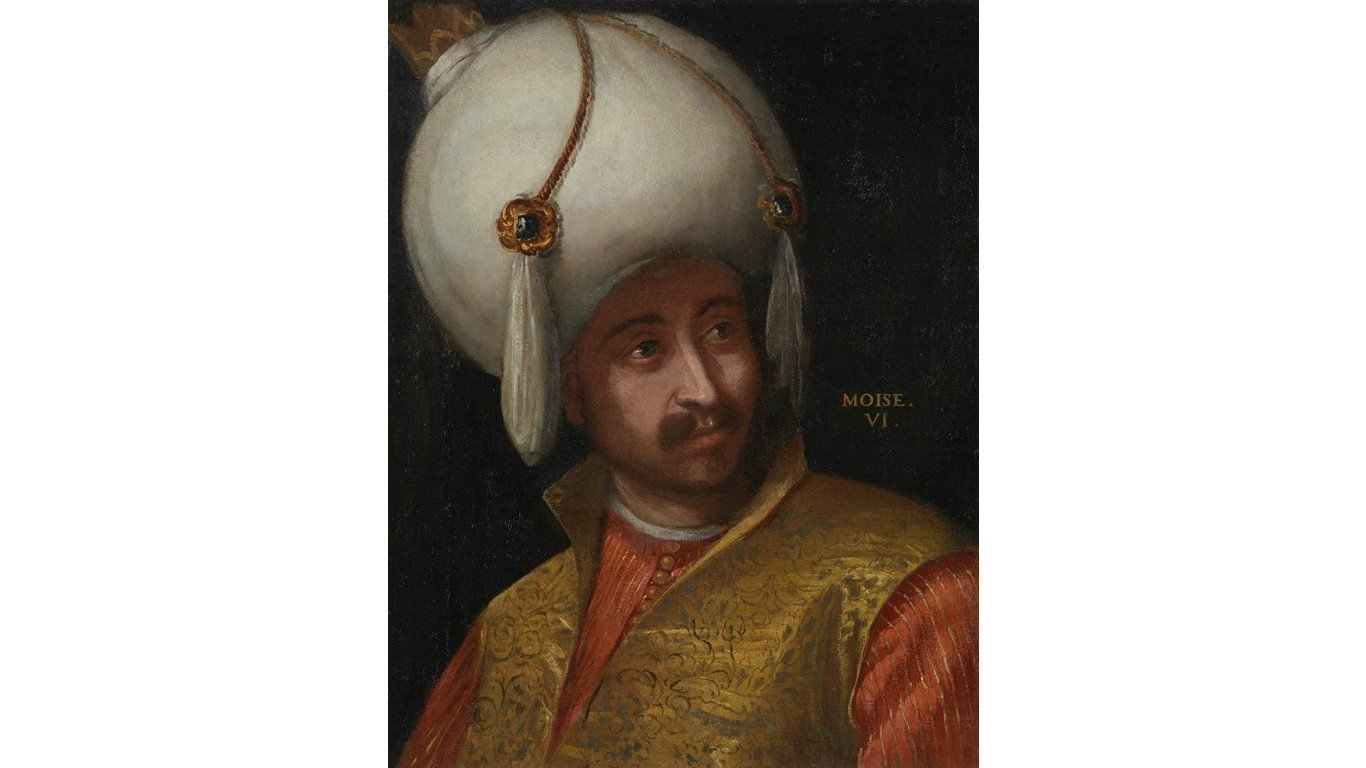
Ottoman Sultan Musa Çelebi
> Last battle: Çamurlu Derbent
> Year: 1413
> Enemy: Mehmed Çelebi
Sultan Musa was the co-ruler of the Ottoman Empire for three years during its civil war of 1402-1413, which pitted Musa against his brothers who disputed his authority. One of the brothers, Mehmet Çelebi, emerged victorious and named himself Sultan Mehmed I after Musa was killed at the Battle of Çamurlu near modern-day Samokov, Bulgaria.

Byzantine Emperor Constantine XI Palaeologos
> Last battle: Constantinople
> Year: 1453
> Enemy: Ottoman Empire
The fall of Constantinople (Istanbul) marked the end of both the Byzantine Empire and Emperor Constantine XI at the hands of the Ottomans led by Sultan Mehmed II. The strategically located city between the Sea of Marmara and the Black Sea had long been strongly defended by a massive wall, but this time the Ottomans managed to breach it before allies in Christian Europe could arrive. Constantine is believed to have been killed either near the breach of the wall or while fleeing in a boat.
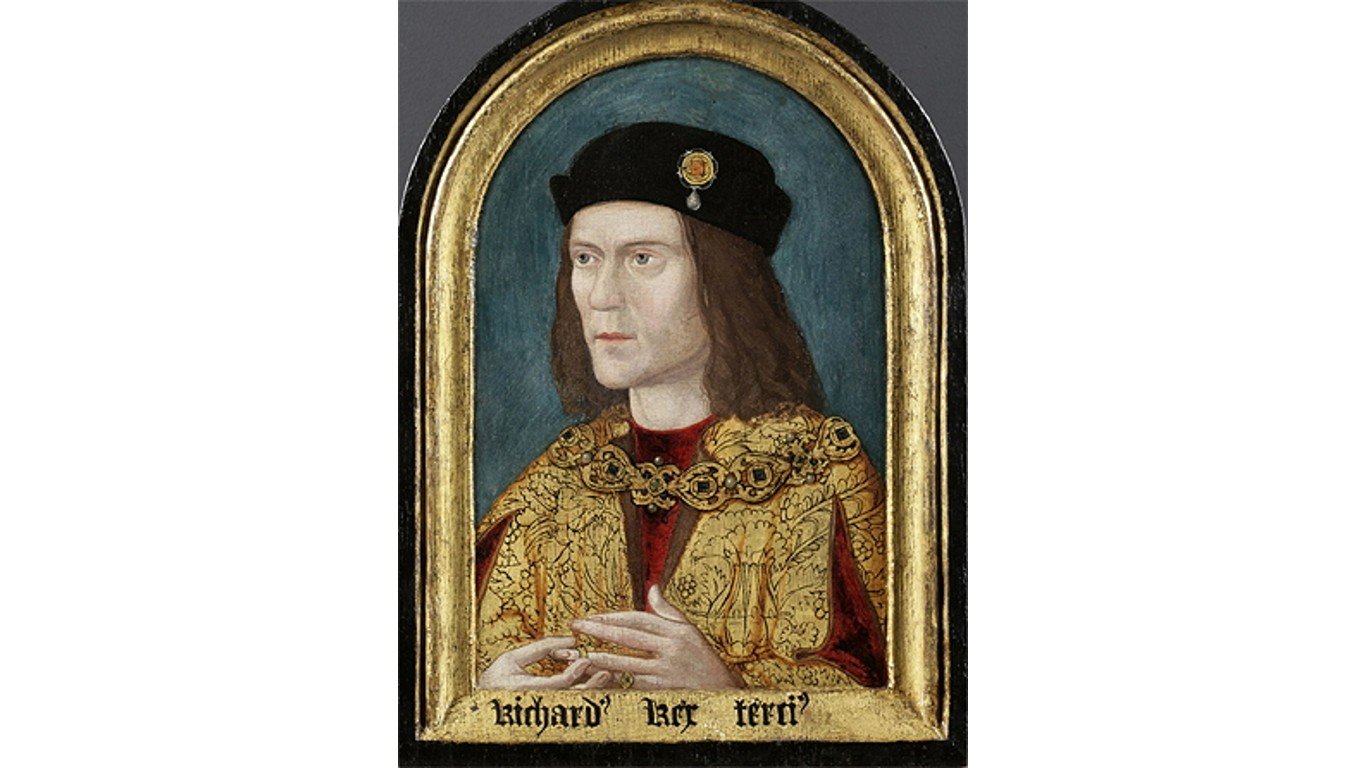
Richard III, King of England
> Last battle: Bosworth Field
> Year: 1485
> Enemy: Tudors of the House of Lancaster
The discovery of Richard III’s skeleton under a parking lot in Leicester in 2012 helped to provide the most intimate details of the final moments of a king’s death in battle. Anthropologists confirmed that Richard had pronounced scoliosis, as suggested by his description as “hunchbacked” in Shakespeare’s play named after him. The king fought and died in one of the last battles of England’s War of the Roses at the Battle of Bosworth. The remains show the king sustained numerous blows from numerous weapons, indicating that he was overtaken by soldiers loyal to Henry Tudor – the future King Henry VII.

James IV, King of Scotland
> Last battle: Flodden
> Year: 1513
> Enemy: England
The Battle of Flodden in Northumberland near the town of Branxston was the largest clash between England and Scotland, a fight sparked by King Henry VIII’s invasion of France, in which the Scots were bound by treaty to militarily aid French King Louis XII. Some 60,000 Scottish troops marched into England but were defeated in the battle that claimed King James IV as well as many Scottish noblemen.

Suleiman the Magnificent, Sultan of the Ottoman Empire
> Last battle: Szigetvár
> Year: 1566
> Enemy: Habsburg Empire
Suleiman the Magnificent ruled for 46 years, the longest of any Ottoman sultan. His military victories led to the division of Hungary and Croatia between the Hapsburg and Ottoman empires. On his way to take Vienna, Suleiman and his troops attacked Szigetvár, a heavily fortified castle in southern Hungary defended by Croatian and Hungarian troops. The aging and ill Suleiman died from a heart attack during the siege. The leader of the garrison, Count Nikola IV Zrinski, was also killed, but he left behind a slow fuse to a large cache of gunpowder that killed 3,000 looting Turkish soldiers, ending the Ottoman march to Vienna.
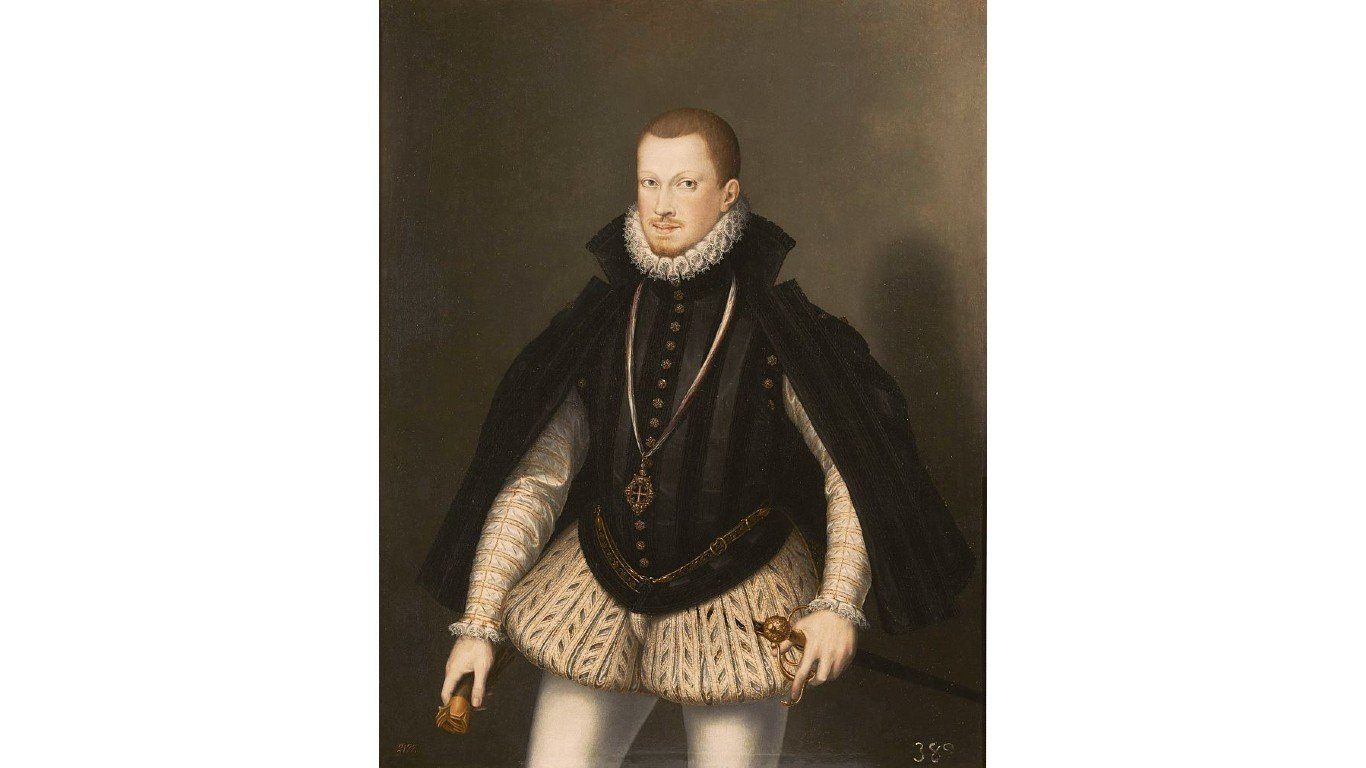
Sebastian I, King of Portugal
> Last battle: El-Ksar el Kabir, Morocco
> Year: 1578
> Enemy: Moors in Morocco
Sebastian I was a Christian hardliner who decided to engage in an ill-fated crusade against a much larger force of Muslims in northwestern Morocco. He died in battle as his forces were handily crushed. Back home, many of Sebastian’s loyal and devout followers had formed a short-lived messianic cult known as Sebastianismo, which disavowed his loss and believed he would return and rescue the Portuguese from Spanish rule.
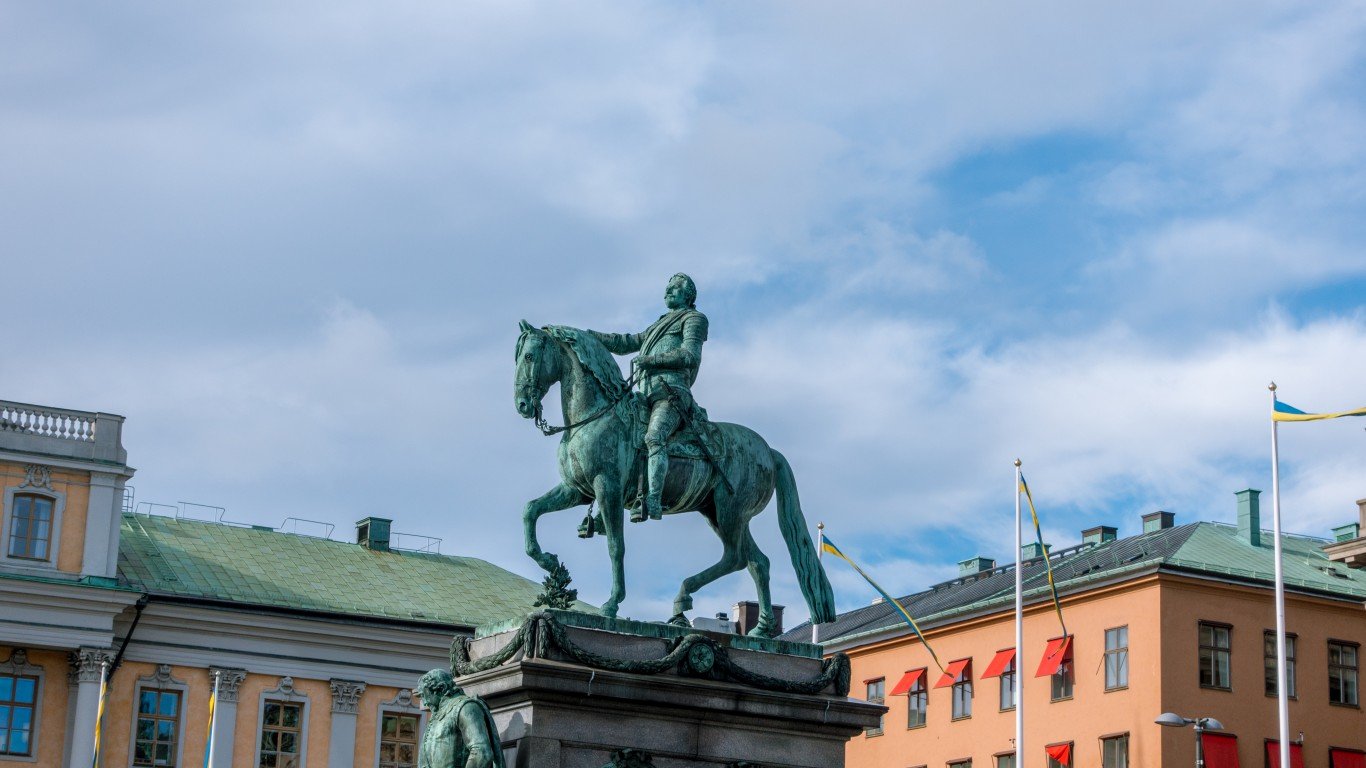
Gustavus Adolphus, king of Sweden
> Last battle: Lützen
> Year: 1632
> Enemy: Habsburg Empire
As Gustavus ascended to the throne of Sweden in 1611 just prior to his 17th birthday, his country was in conflict with Denmark, Poland, and Russia, Sweden’s conflict with Russia was of greatest concern. Gustavus was killed at the Battle of Lützen in what is now eastern Germany, one of the most important skirmishes of the Thirty Years War. But the Swedish victory against the Holy Roman Empire and the Catholic League at the battle helped to delay the birth of a united Germany by about 200 years.
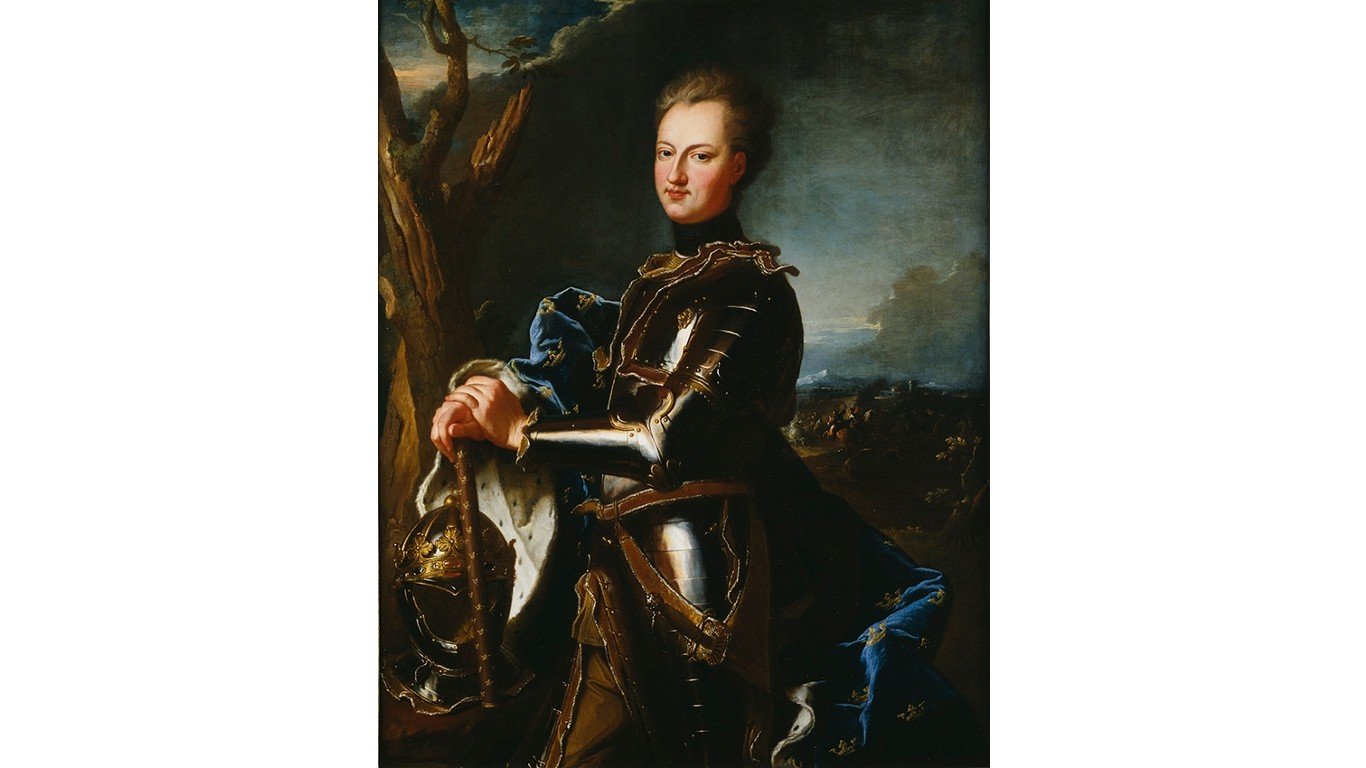
Charles XII, king of Sweden
> Last battle: Halden, Norway
> Year: 1718
> Enemy: Norway
About 86 years after the death of Gustavus Adolphus, another Swedish king became the last European monarch to die in battle. Charles XII was a teenager at the time of his ascension but despite his young age, he proved to be a decent military strategist who defeated a coalition of nations attempting to drive the Swedes out of parts of Northern Europe. After a failed attempt on a march to Moscow and a brief period of exile, he launched new campaigns against Russia and Norway, and was killed by a musket shot during a failed siege of the Norwegian town of Halden.

